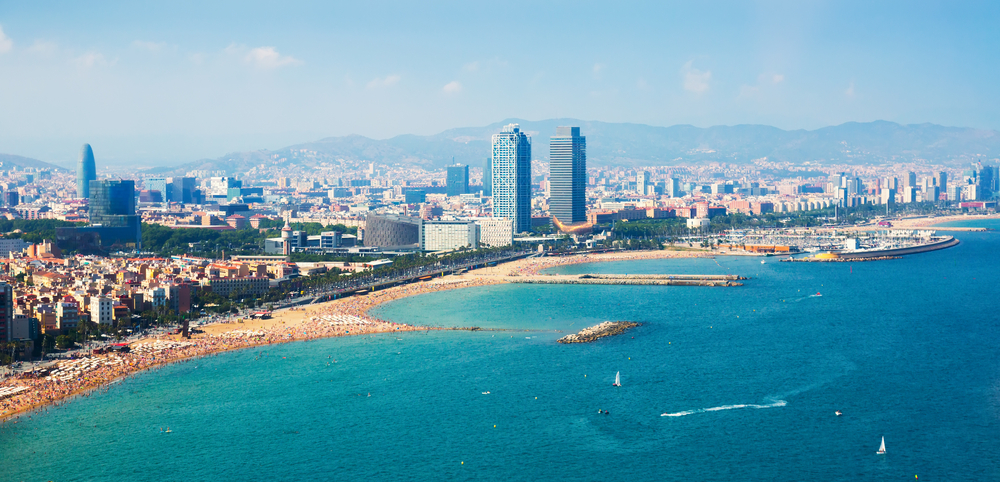What are the negatives of traveling to Barcelona?
Barcelona’s allure is undeniable…
With its blend of Gothic and modernist architecture, sunny Mediterranean climate, and a seemingly endless array of cultural experiences. ..
Yet, beneath its picturesque surface, there are challenges that travelers may encounter. From issues related to overcrowding and pickpocketing to the high cost of accommodations and tourist fatigue…
Understanding these aspects can help you make informed decisions and enjoy your visit more thoroughly.
Overcrowding and Tourist Saturation
One of the most significant issues travelers face in Barcelona is overcrowding. The city attracts millions of visitors annually, and during peak seasons, popular attractions like La Sagrada Família, Park Güell, and La Rambla can become extremely crowded.
This saturation can lead to long lines, difficulty finding accommodations, and a general sense of chaos that can detract from the enjoyment of your trip.
Overcrowding also affects the local population, leading to increased tension between residents and tourists. In some neighborhoods, particularly the Gothic Quarter and El Born, the influx of tourists has led to noise, litter, and other nuisances that have sparked local protests and anti-tourism sentiment.
As a visitor, it’s essential to be mindful of these dynamics and strive to be a respectful guest in the city.
Pickpocketing and Safety Concerns
Barcelona has a well-known issue with pickpocketing, particularly in crowded areas and on public transportation. Pickpockets often target tourists who are distracted or carrying valuables in easily accessible places.
While violent crime is relatively rare, the prevalence of petty theft can be a significant downside for visitors. To mitigate these risks, travelers should take precautions such as using money belts, keeping an eye on their belongings, and avoiding displaying valuable items like cameras and smartphones openly.
Being aware of your surroundings and maintaining a low profile can go a long way in ensuring your safety.
High Cost of Accommodations
Another downside to traveling to Barcelona is the high cost of accommodations, especially during the peak tourist season. The demand for hotel rooms and vacation rentals often outstrips supply, leading to inflated prices.
Budget travelers may find it challenging to secure affordable lodging in central areas, and even mid-range options can be quite expensive.
To manage costs, consider booking accommodations well in advance, staying in less touristy neighborhoods, or exploring alternative lodging options such as hostels or shared apartments. Additionally, visiting during the off-season can help you find better deals and avoid the crowds.
Tourist Fatigue and Service Quality
The sheer volume of tourists in Barcelona can lead to what is often referred to as “tourist fatigue” among locals. This phenomenon occurs when residents and service industry workers become weary of the constant influx of visitors, which can impact the quality of service you receive.
In some cases, this fatigue may manifest as impatience or a lack of friendliness from hotel staff, restaurant servers, and other service providers.
While many Barcelonans are warm and welcoming, it’s essential to be patient and understanding, recognizing that the challenges of mass tourism can take a toll on those who live and work in the city year-round.
Showing respect and appreciation for their efforts can help create a more positive experience for everyone involved.
Language Barrier
Although Barcelona is a cosmopolitan city, there can still be language barriers that pose challenges for some travelers. While many people in the tourism industry speak English, not all locals are fluent, particularly in more residential or less touristy areas.
The primary languages spoken are Catalan and Spanish, and navigating daily interactions without some knowledge of these languages can sometimes be difficult.
Learning a few basic phrases in Spanish or Catalan can go a long way in enhancing your experience and demonstrating respect for the local culture. Additionally, using translation apps and carrying a phrasebook can help bridge the communication gap.
Weather Extremes
Barcelona enjoys a Mediterranean climate, which means mild winters and hot summers. However, the summer months can sometimes be uncomfortably hot and humid, making sightseeing and outdoor activities less enjoyable.
The heat can also exacerbate the feeling of overcrowding, particularly in areas with little shade or ventilation.
To avoid the extreme weather, consider visiting Barcelona during the spring or fall when temperatures are more moderate. This timing also aligns with fewer crowds and lower accommodation costs, providing a more pleasant overall experience.
Limited Accessibility
While Barcelona has made strides in improving accessibility for travelers with disabilities, there are still challenges. Many historic buildings and sites may not be fully accessible, and the city’s narrow streets and uneven pavements can pose difficulties for those with mobility issues.
Public transportation, while generally efficient, may also have limitations in terms of accessibility.
Researching and planning your itinerary with accessibility in mind can help mitigate these challenges. Look for accommodations and attractions that are known for their accessibility features, and consider using specialized services or tours designed for travelers with disabilities.
Tourist Taxes and Additional Fees
Barcelona has implemented tourist taxes and additional fees that can add to the overall cost of your trip. These taxes are typically included in the cost of accommodations and may not always be clearly communicated at the time of booking.
Additionally, some attractions and services may have hidden fees that can catch travelers off guard.
To avoid surprises, be sure to read the fine print when booking accommodations and activities. Budgeting for these additional costs in advance can help you manage your expenses more effectively.
Traffic and Transportation Issues
Navigating Barcelona’s busy streets and public transportation system can be challenging, particularly for first-time visitors. Traffic congestion, especially during rush hours, can make driving and getting around the city difficult.
While the metro and buses are generally reliable, they can become crowded and occasionally face delays.
Planning your routes in advance, using apps for real-time transportation updates, and considering alternative modes of transport such as biking or walking can help alleviate some of these issues.
Additionally, staying in centrally located accommodations can reduce the need for extensive travel within the city.
While Barcelona offers a wealth of cultural, historical, and architectural treasures, it’s essential to be aware of the potential downsides to make the most of your trip.
By understanding and preparing for challenges such as overcrowding, pickpocketing, high costs, and tourist fatigue, you can navigate these issues more effectively and enjoy a rewarding visit.
Barcelona remains a city worth exploring, with its unique blend of old-world charm and modern vibrancy, but approaching your trip with awareness and preparation can ensure a more enjoyable and memorable experience.


